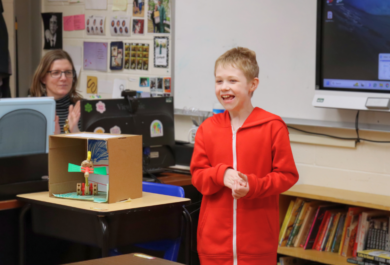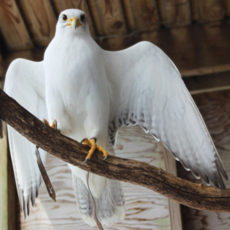Announcements

Thursday, September 5, 2019
1:00pm - 4:30pm
The Emerald Ash Borer (EAB) is an invasive insect killing close to 100% of the ash trees in our region. Join us for a free workshop to learn how you can recognize and reduce the damage and support ash tree conservation.
 The Managing and Monitoring Ash (MaMA) program, developed by of the Ecological Research Institute (ERI) in collaboration with the U.S. Forest Service, provides a management and citizen-science framework that includes steps for mitigation of EAB damage while facilitating ash conservation and restoration based on detection and selective breeding of “lingering ash” – native trees that remain healthy even after almost all the mature ash around them have died.
The Managing and Monitoring Ash (MaMA) program, developed by of the Ecological Research Institute (ERI) in collaboration with the U.S. Forest Service, provides a management and citizen-science framework that includes steps for mitigation of EAB damage while facilitating ash conservation and restoration based on detection and selective breeding of “lingering ash” – native trees that remain healthy even after almost all the mature ash around them have died.
In this FREE workshop, you’ll learn how to recognize EAB damage and manage ash, how to participate in MaMA’s citizen-science projects for ash conservation, and the hope for ash’s future offered by resistance breeding. You’ll learn not only how to mitigate EAB’s effects, but steps to enable long-term ash conservation even after this pest has killed virtually all an area’s ash.
How to recognize the signs of EAB, considerations for treating or cutting ash, and why leaving some live ash standing is important for ash conservation. Also, an introduction to MaMA’s interactive Lower Hudson map prioritizing actions for each locality and to MaMA’s citizen-science projects helping detect healthy trees for potential use in resistance breeding. Most importantly, you’ll learn why it’s necessary to leave some standing live ash trees, especially healthy ones.
This includes setting up a plot for the MaMA Monitoring Plots Network, which reaches from New England to the Midwest, and the MaMA Lingering Ash Search project, in which you report ash that remain healthy after most nearby ash have been killed by EAB. Some of these trees are lingering ash, which provide great hope for ash conservation and restoration through the U.S. Forest Service EAB Resistance Breeding Program.
Participants can earn the following CEUs: DEC Pesticide Applicator (3 Forest; 3 Ornamental & Turf); NYS Nursery and Landscape Association (3.5 CNLP), International Society of Arboriculture (1.25 Arborist; 1.25 BCMA Practice), and Cornell Cooperative Extension (3 Master Naturalist). To earn these credits, attending both Parts 1 and 2 is required.
This workshop is funded by the Lower Hudson Partnership for Regional Invasive Species Management (LH PRISM) and is presented by the Ecological Research Institute in partnership with Green Chimneys and the Watershed Agricultural Council.
Email: [email protected]
or call ERI’s MaMA program at 845.419.5229

Crowned the best for falconry in medieval times, gyrfalcons were once reserved for kings. As the largest falcon in the world, with exquisite plumage ranging from bright white to deep charcoal, gyrs are revered for their powerful skill of flight. Their long wings make hunting waterfowl from 3,000-feet-high a feasible and fantastical feat. This falcon was flown in the sport of falconry for several years.